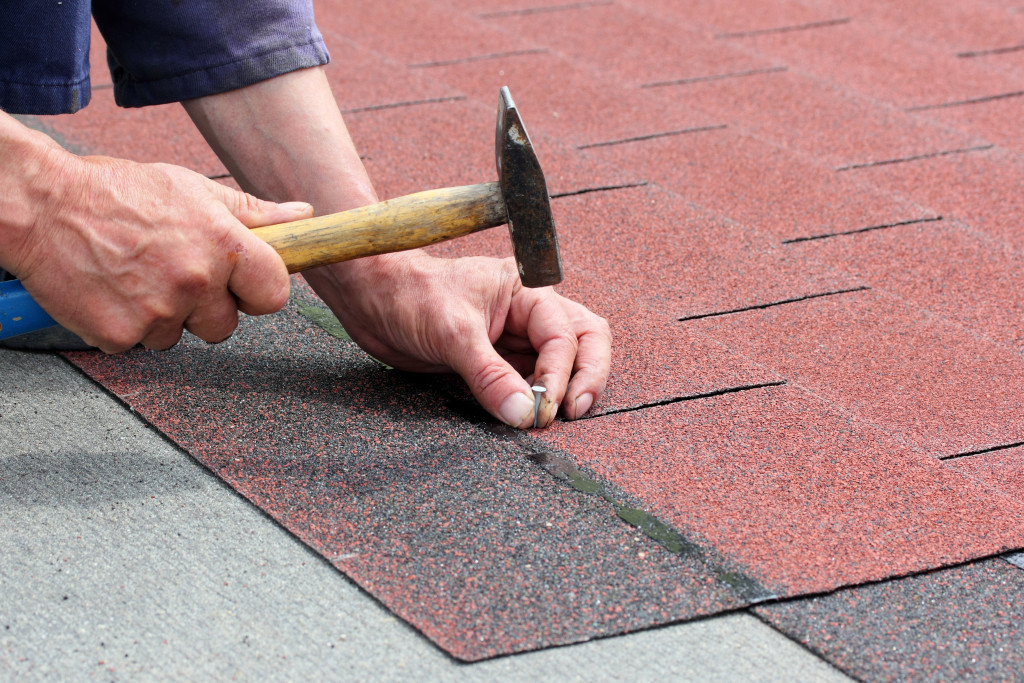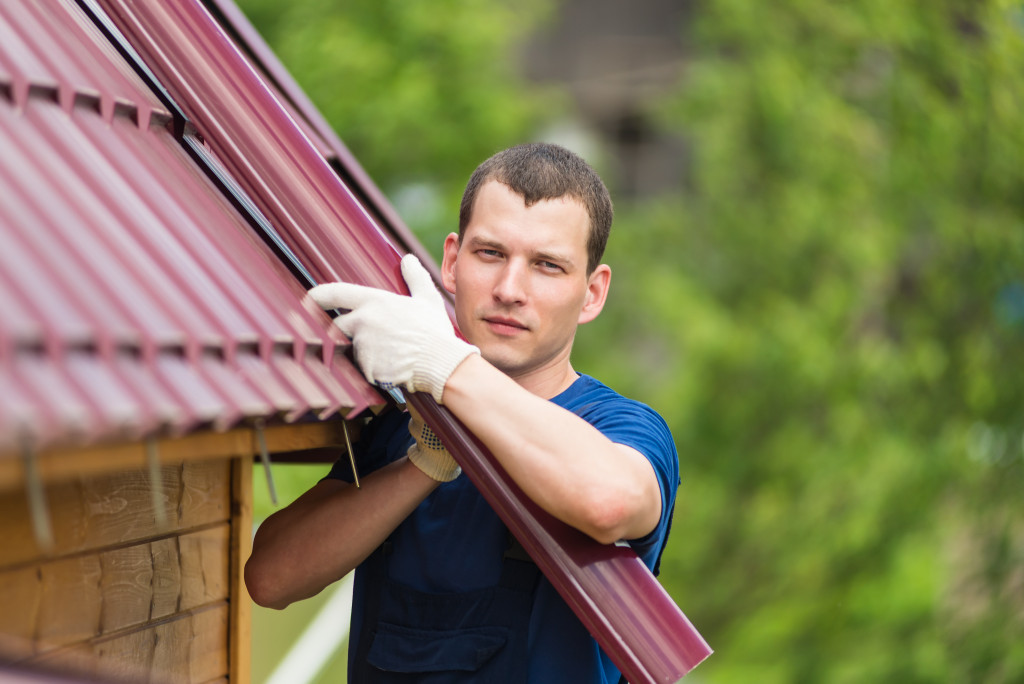Few things are as important to the integrity of your home as a well-maintained roof. A sturdy roof protects you and your property from the elements, and it adds to the curb appeal and resale value of your property. Given the importance of a functional roof, it’s no wonder that roof repair is one of the most common home improvement and maintenance projects.
Fortunately, you don’t always need to call a professional to get the job done. In many cases, you can repair your roof yourself. Of course, there are some circumstances in which it’s best to leave the work to the professionals. But if you’re handy and have a bit of experience with home improvement projects, then you should be able to handle most roof repairs on your own.
To help you get started, we’ve put together a quick guide on how to repair your roof yourself. Read on for everything you need to know about fixing a roof, from diagnosing the problem to making the repair.
Common Roof Problems and How to Fix Them
Before you can fix a problem, you need to be able to identify what that problem is. When it comes to roofs, there are four main types of problems that you might encounter: leaks, missing or damaged shingles, holes or cracks, and sagging. Let’s take a closer look at each one.
Leaks
Leaks are perhaps the most common type of roof problem. These are more common on metal sheet roofing. They may be caused by cracks and holes, which will be discussed later. Leaks also happen when sealants are worn away by the elements or when flashing cracks or warps. Leaks also happen to shingle roofs when shingles get damaged or go missing. If you think you have a leak, the first thing you’ll want to do is go into your attic on a rainy day and look for signs of water damage. If you see any stains on the ceiling or evidence of water dripping, then you likely have a leak that needs to be fixed.
The good news is that fixing a leak is usually a relatively simple process. Here are the steps you need to take:
- Locate the source of the leak. This can be tricky, but it’s important to do so in order to properly fix the problem. Often, the source of a leak is not easy to see from the ground. You may need to climb onto the roof and inspect it closely in order to find it.
- Repair the source of the leak. Once you’ve located the source of the leak, it’s time to fix it. For issues related to sealants, simply scrape them off and reapply. If the sealant is hard to scrape off, you can use vinegar, alcohol, or WD-40 to make it easier to pry off. For faulty flashing, you either seal holes or cracks with sealant or replace warped sections. Make sure you follow relevant standards.
- Check for leaks again. Once you’ve repaired the source of the leak, it’s important to check for leaks again after rain. This will help ensure that the fix was successful and that your home is now water-tight.
Missing or damaged shingles
Missing or damaged shingles are another common issue. You can usually spot this problem by simply taking a look at your roof. If you see any bare spots or damaged shingles, then those will need to be replaced as soon as possible. Keep in mind that missing or damaged shingles are more than just an aesthetic issue; they can also lead to leaks if not repaired promptly.
- To replace damaged shingles, here’s what you should do:
- Use a flat bar like so pry open tabs of overlapping shingles. Go as far as two shingles to the left, right, and above, so that you can completely remove the damaged shingle.
- Use a crowbar or claw hammer to pry out the damaged shingle’s nails.
- Replace the shingle with a new one that is of the same color and size. Some manufacturers make the same colors as others, so you will probably never run out of options. If you’re unsure about what shingles you need, bring the damaged one with you to a home supply store and ask for assistance getting a similar one. For best results, follow the standard for installation.
- Nail down the new shingle with 4-6 nails, then reattach the shingles that should overlap it.

Holes and Cracks
Holes and cracks in your roof can also cause problems down the line if not repaired properly. These issues are often caused by severe weather conditions like hail or high winds. If you see any holes or cracks in your roof, it’s best to patch them up as soon as possible with some sealant or caulking. For shingles, it’s easier to just replace them. For metal sheet roofing, since sheets are usually large, you should try to fix the holes and cracks. However, if the damage is extensive, you’ll have to get new similar sheets from nearby roof sheeting suppliers.
Sagging
Sagging is another issue that can indicate bigger problems with your roof. If you see any sagging in your ceiling, then it’s likely that there is some water damage present, and you’ll need to take care of that right away before it gets worse. The ceiling or roof supports will need to be fixed, and this is a very large undertaking. Try to assess the extent of the damage yourself, but just to be sure, consult a professional for diagnosis and repair.
Final Thoughts
In short, there are four main types of problems that you might encounter with your roof: leaks, missing or damaged shingles, holes or cracks, and sagging. If you’re handy and have a bit of experience with home improvement projects, then you should be able to handle most repairs on your own. However, if the problem is more serious or extensive, then it’s best to call in a professional for help.

